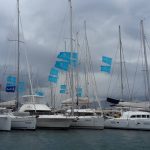There are definitely more than 7 things you should know when sailing in any destination for the first time, but let’s begin here.
I do not pretend to be a Captain nor to be the authority on the matter, thankfully my husband is a Captain and has been sailing the Adriatic for more than 15 years. I asked him what did he think the absolute basics anyone should know when sailing in Croatia for the first time were and, like the no-fuss man that he is, his response was; “It doesn’t matter where you are sailing for the first time, any sailor should know the standards and protocols”.
And, he is right. But the two of us have both seen that this is not always the case, so here are a few things you should know.
1. Entering Croatian Waters for the First Time
If sailing from another destination, upon entering Croatian waters for the first time, you need to go to the nearest customs office to get clearance. This will include verifying crew and passenger lists at the Harbour Master’s Office. At customs, you will need to pay prescribed fees for safety of navigation, sea pollution, as well as using the objects of safety at sea (i.e. lighthouses). You will also need to pay a tax fee.
During your navigation in Croatian waters, you need to have those documents with you at all times to verify that you paid all customs and taxes. You also need to carry a navigation certificate for the vessel as well as a skipper’s licence from the country you are arriving from, insurance and certificate of ownership of the vessel – if it is not your boat, you need verified proof that you have permission to sail the boat. You can find more detailed information on the Ministry of the Sea, Transport and Infrastructure Page here or refer to the code and regulations of your country.
2. Weather Patterns: Keep Informed
All sailors know that you should never mess with, or underestimate mother nature. When coming to Croatia, make sure you are aware of the weather patterns. To keep up-to-date with the latest weather forecasts, Meteo.Hr should give you all the information you need to know.
Photo Credit: 3 Gray Goats Photography
3. Winds of Croatia
No sailing article would be complete without mentioning winds, a vital element to sailing and also interwoven in the Dalmatian culture. Here is a quick overview of the winds you should be aware of.
Bura: First up is Bura, the wind that blows from the NE. Bura can blow for up to 3-days and is strongest below the mountain ranges – i.e. below Velebit mountains up North or Biokovo in the South. The highest recorded speeds were in 2003, with speeds reaching 304km per hour – approximately a crazy 161 knots! Bura can be more than difficult to handle if you are sailing as he blows in gusts and is extremely unpredictable. Best to find a safe harbour or port if this wind starts picking up.
Jugo: A SE wind which is usually accompanied by bad weather – rain, storms, you name it. Jugo usually means that the low-pressure system from the NW Europe is moving along the Adriatic to the East – it starts with Jugo, then clouds, rain and as the cyclone passes the winds change. A good prediction for Jugo is cirrus clouds coming from the West.
Lebić: In Dalmatia, you will often hear talk of Jugo and Bura, but at sea, Lebić is another wind you want to look out for. This wind typically begins after Jugo when the cyclone moves from NW – SE, winds shift and then you get Lebić – a SW wind who blows from Italy. While this wind is not as strong as the fierce Bura, he can cause absolute chaos on the sea as he has potential to create large swells – this is particularly dangerous for the outer laying islands like Vis, Hvar, Mljet and Korcula.
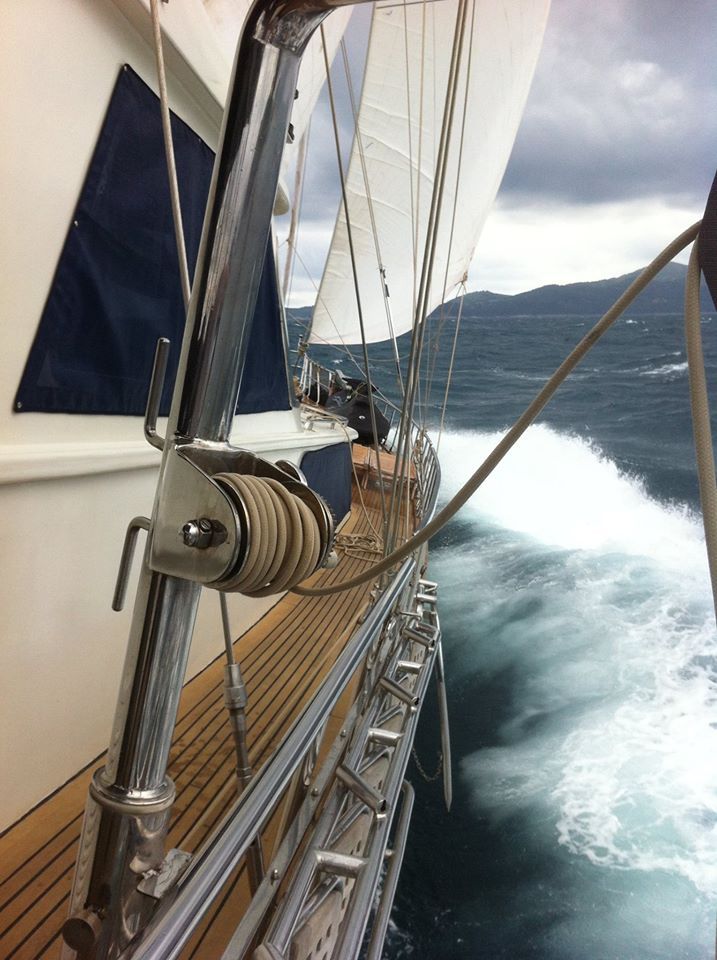
Photo Credit: Tash Pericic
Maestral: The sailor’s companion. Maestral is the summer wind coming from the NW, he is a constant wind and typically starts around noon and finishes around 6pm, it is the summer daily circulation of air. When Maestral is blowing, you can rely on good and stable weather continuing.
Tramontana: Is a Northern wind who normally follows the end cycle of Jugo. The only time this wind is a cause for concern is when he blows for around 2 – 3 days, in this case he can lift the sea, creating huge swells and generally making a mess.

Image Credit: Boat Charter Croatia
4. Communication Channels
You should always be listening to CH.16 on your radio for all warnings and messages regarding: weather, safety on sea and general reports.
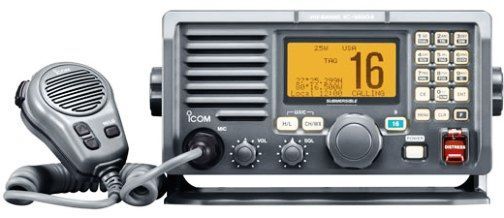
5. Marinas and Ports
For those wanting to purchase a Pilot guide, Peljar is the most trusted book. As well as containing charts and anchorage information for the Adriatic, it also contains all Ports and Marinas. For your online guide, you can search Total Croatia Sailing’s Ports and Marinas section for a comprehensive list of the majority of Ports and Marinas along the coast.
If you wish to dock in a marina or port, it’s always good to announce your arrival a day or two before, especially in peak season. Each port and marina varies in cost and amenities, you can see an overview in our guide.
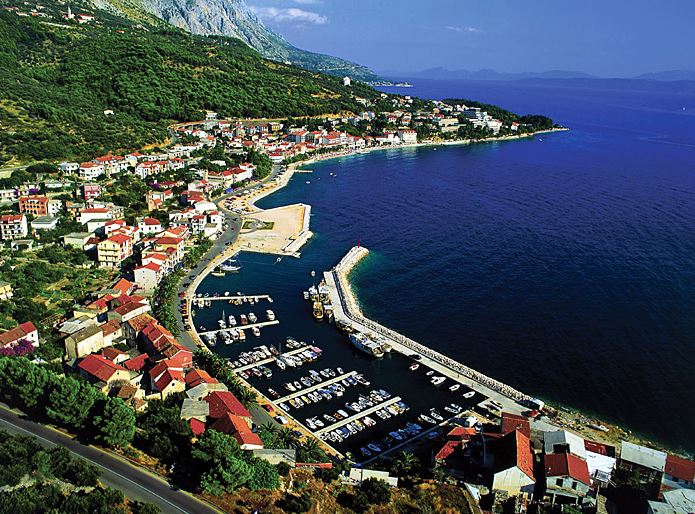
Photo Credit: TZ-Podgora
6. Anchoring
When sailing in Croatia, we recommend to mix-up your itinerary between docking in harbours or ports and anchoring. While docking can make your life easier if you wish to get on and off your boat – maybe you want to go out for dinner or need supplies. However, nothing quite beats the experience of anchoring and waking up in a secluded bay. With more than a thousand islands, you better believe Croatia has hundreds of gorgeous locations to anchor in.
Anchoring: Some anchorages are capable of accommodating yachts of various draft and size, while others are more difficult and less accommodating. In any case, be sure to check your charts and pilot guides combined with a little common sense.
Anchorage Fees: You will encounter an average of 10 kuna per metre of vessel for anchoring – prices may increase around major attractions like National Parks. However, it is still possible to find secluded bays and spots which do not require anchorage fees.
Mooring Buoys: You will also find mooring buoys in many popular destinations now, particularly National Parks and privately-owned bays.
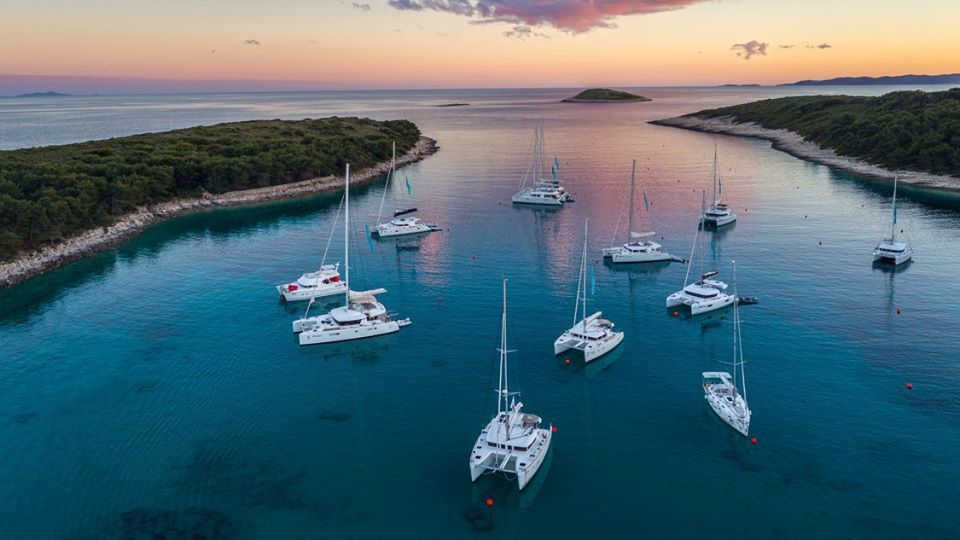
Photo Credit: Mario Jelavic Photography
Anchoring Etiquette: Watch where you drop your anchor in a ‘crowded’ area to be sure you don’t cross over any other lines. And, there is an unspoken rule, where possible, leave a decent amount of space between yachts – everyone is choosing to anchor for the same reasons, to enjoy peace and privacy, so don’t get all up in someone else’s grill.
Anchoring in bad weather: Often times we have witnessed at sea a yacht getting tossed around in bad weather and wreaking havoc to all those nearby because the skipper went out for dinner (or partying). Pay attention, if you are off the boat and the weather starts to turn, get back to make sure everything is secure and you are able to react if needed. This also covers keeping watch in bad weather, it is not uncommon for anchors to slip, better to lose a night’s sleep, than to lose your boat.
Watch this video by Yachting World for Tips on Anchoring in Bad Weather
7. Go Green
Part of a life at sea, is being in tune with nature. It should go hand-in-hand that if you love being at sea, you should also want to protect and take care of her. There are plenty of options along the coast to dispose of your waste correctly. My husband and I have physically ‘fished’ whole bags of rubbish out of the sea before and it breaks my heart. Plastic pollution is a worldwide issue and while Croatia’s waters are some of the cleanest in Europe, we are not immune to the effects of others’ actions. Every time we anchored near a small bay, we would always clean the beaches of plastic that had washed ashore and I know plenty of yacht crews who do the same.
Whether you are from Croatia or not, take care of and respect the environment you are in. There are a number of ways you can make a difference:
- Limit the amount of goods you purchase in plastic
- Reduce, Reuse, Recycle
- Participate in beach clean-ups whenever you can
- Shop in local markets and buy wholefoods (not plastic wrapped fruit from the supermarket)
- Use ecological/green cleaning products

Image: Crew from Gulet Linda cleaning a bar, taking part in the Take 10 Initiative
If you want to make a difference while on the Adriatic, take part in the Take 10 initiative – clean up 10 pieces of rubbish, or take 10 minutes to clean a bay or area. Send your pics to Take 10 to be featured.
Did you find this useful, why not stop by Total Croatia Sailing’s Page for more news and stories like this, or LIKE our Facebook page?

